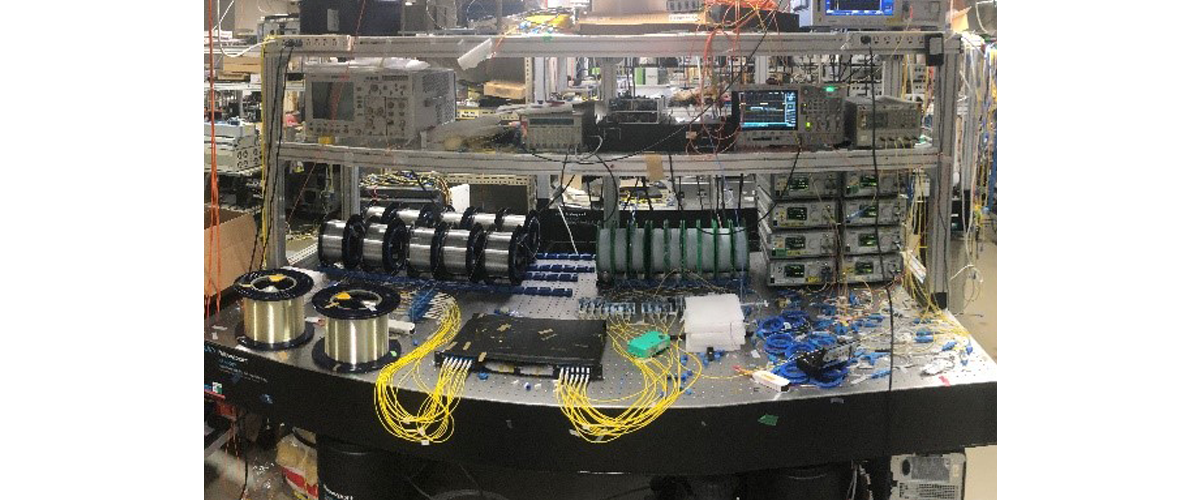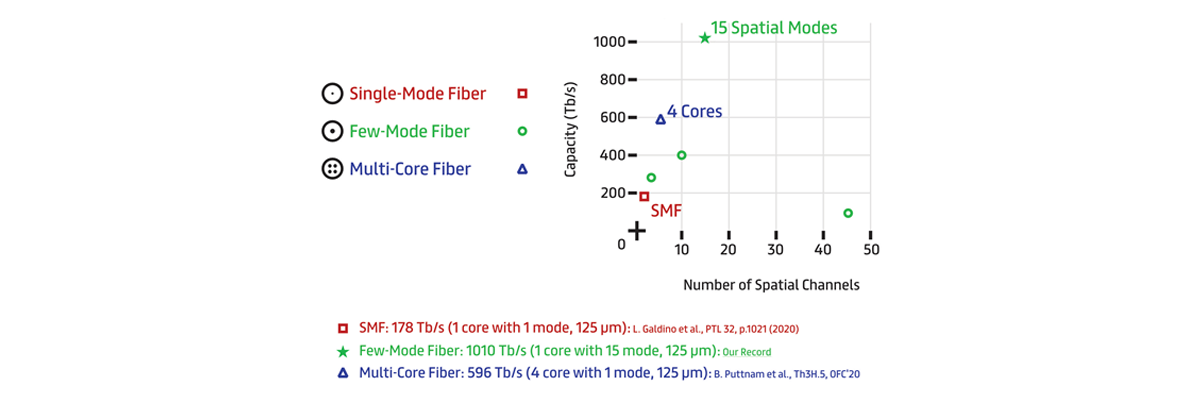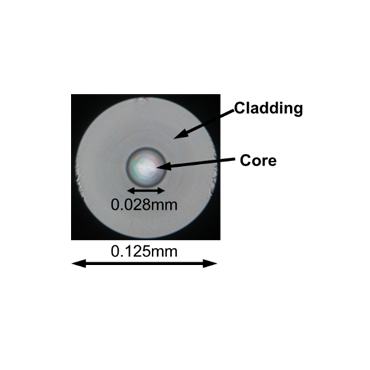Prysmian’s 1 Petabit per second fibre transmission speed record

A group of researchers from Japan’s Network System Research Institute of the National Institute of Information and Communications Technology (NICT), Nokia Bell Labs, and Prysmian Group’s Optical Fibre Business Unit have successfully realized the first space division multiplexed transmission exceeding 1 Petabit per second (1000 Terabit per second) in a fibre with standard cladding (125 µm) and coating (245 µm) diameters.
This increases the previous standard dimension fibre data-rate records by 5.7 times (single-mode fibre), 2.5 times (few-mode fibre) and 1.7 times (multi-core fibre). The total capacity of the network corresponds to simultaneous 8K-TV broadcasting for 10 million people. You can’t reach this speed using standard single-core, single-mode fibre,
explains Pierre Sillard, Fibre Products R&D Manager, Prysmian Group. The current record with single mode technology is less than 200 Terabit per second. That’s the limit for this type of fibre.
We decided to take a different approach, using space division multiplexing technology. This allows you to use multiple core or modes inside a fibre. You can fit four cores in a standard 125 µm fibre but with more than four you get crosstalk issues between cores, degrading the signals transmitted in the fibre. If you want to add cores the diameter increases to 150 µm and up to 250µm – twice the diameter of a standard fibre. This is necessary to avoid crosstalk issues. The larger fibre means many standard practices and measurements no longer apply. Mechanical reliability is degraded, and splicing becomes more complex.
Instead, we decided to add more modes, allowing us to keep to the 125µm limit. Our challenge was to increase speed while still working with a standard dimension fibre. We increased the core diameter from ~9 µm to ~28 µm and used 15 modes instead of one. That helped us to increase capacity by a factor of 10 to 15. There is some crosstalk between the modes, so digital signal processing is required at the reception end to recover information in each mode.
There’s a limit to the length you can cover, however. We transmitted 1 Petabit per second over 23 km. The previous record of 178 Terabit per second using single mode fibre only covered 40 km. Another record with four-core fibre, reached speed of 596 Terabit per second, but also with a distance limitation of 54km.
We managed to achieve this result because Prysmian has a long-standing history of designing, fabricating, and testing fibres, as well as in wave division multiplexing technology. The experiment combined highly spectral efficient wideband optical transmission with our optical fibre guiding 15 spatial modes and the use of specific mode multiplexers. NICT carried out the transmission experiment that used the fibre we had created and mode multiplexers developed by Nokia Bell Labs. They used multiple-input multiple-output (MIMO) and digital signal processing techniques to recover signals from each mode with small losses. The results are a great verification of our technology.

“Some twenty years ago when a speed of 1 Terabit per second was reached, it was a huge landmark, and so is this current new record. The new technology isn’t ready for mass-market roll out yet, but it does represent a vital step towards the future. The success of large-capacity transmission using single-core few-mode fibre, which has a high spatial signal density and is easy to manufacture, is expected to advance high-capacity transmission technology. This could be used in telecom and data networks, from long-reach to short-reach applications.”

Pierre Sillard
Fibre Products R&D Manager, Prysmian Group
The results of this study were accepted for the prestigious post-deadline session at the 46th European Conference on Optical Communications (Paper Thh3A-1, ECOC, December 2020), one of the largest international conferences related to optical fibre communication.






